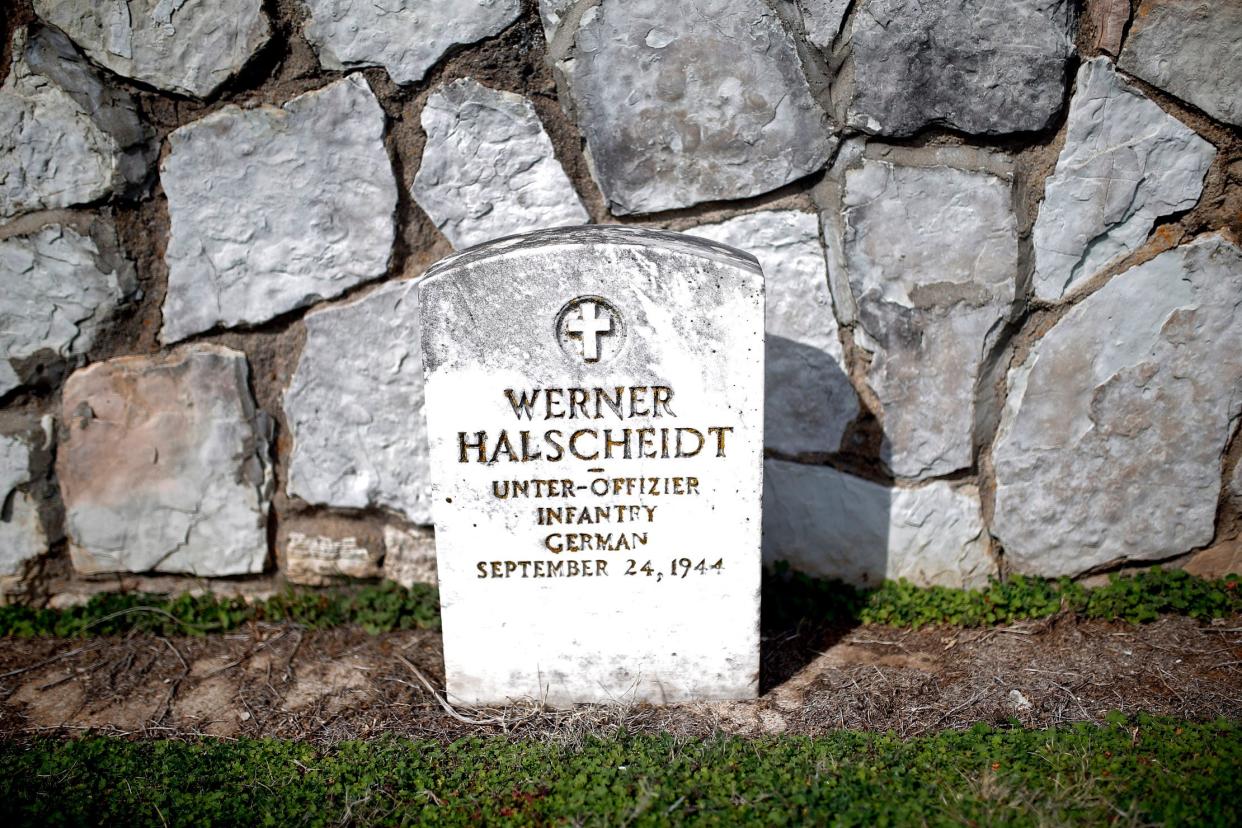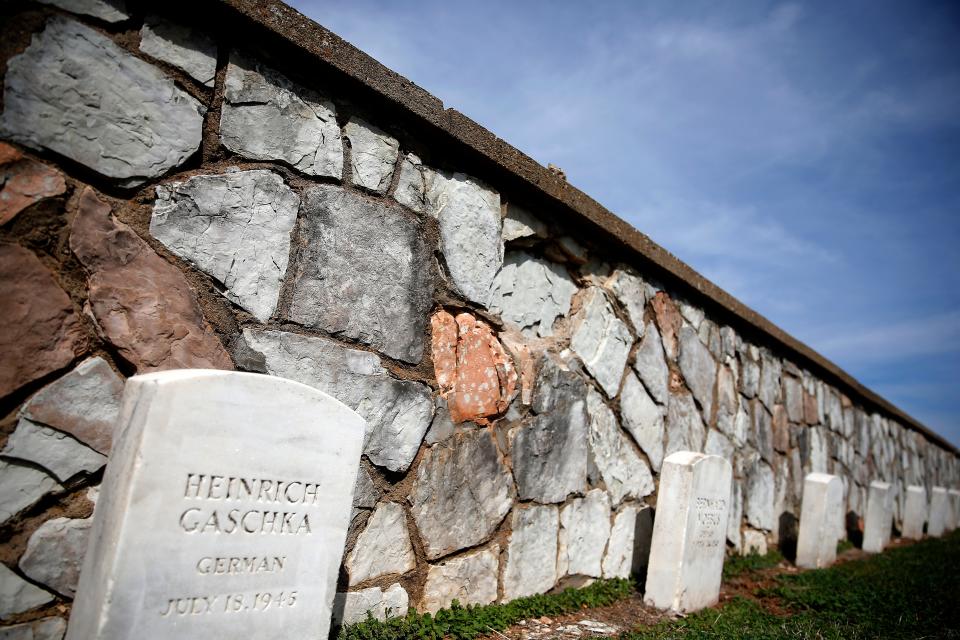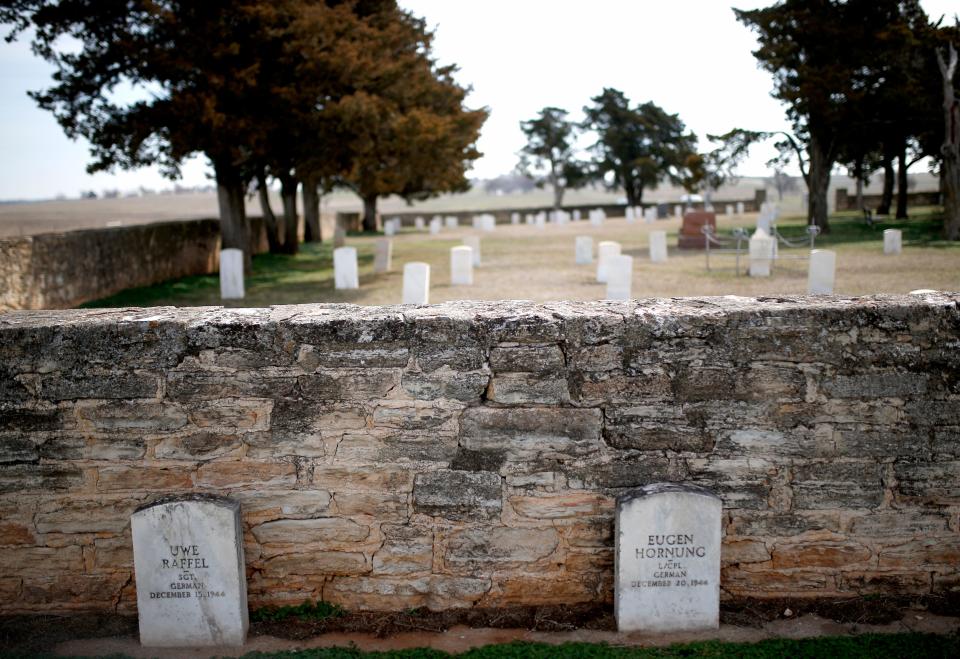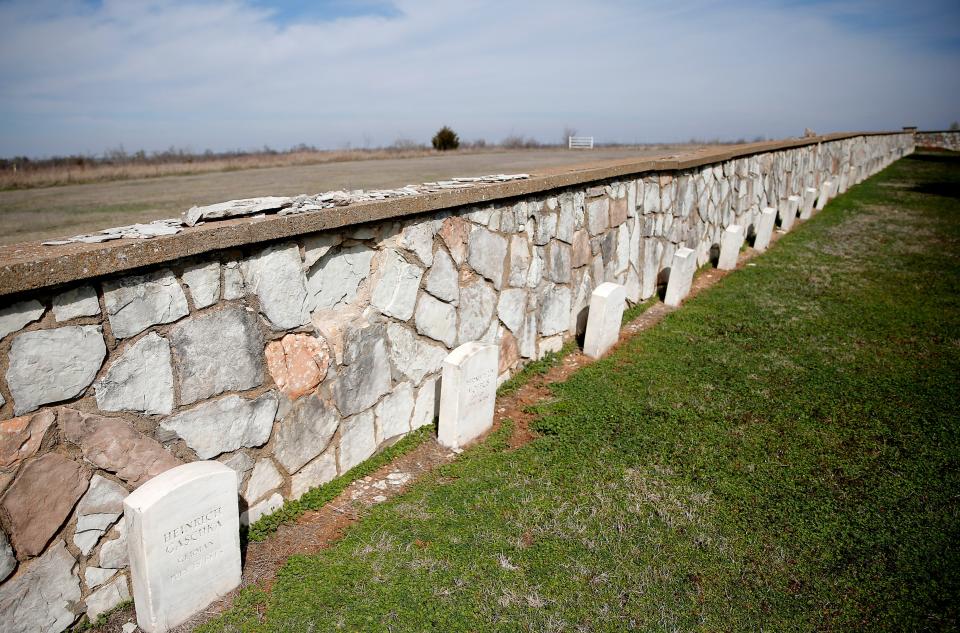'It's all history.' Fort Reno Cemetery works to keep memory of WWII German, Italian POWs alive

EL RENO — About 35 miles west of Oklahoma City, a line of gravestones dot a small walled annex of land inside the cemetery of a former U.S. cavalry post. The white markers signify the final resting place for numerous German prisoners of war during World War II who never made it back to their homeland.
Fort Reno, home of the cemetery, has a varied history. It was initially founded in 1874 as a military camp for the United States cavalry — including the 9th and 10th regiments for the famous all-Black "Buffalo soldiers" — during the government's war against the Great Plains Native American tribes. Fort Reno later became a pivotal spot for raising and training horses and mules during both world wars of the 20th century. Today a visitor can still see cattle grazing in the fields surrounding the post.
But nowadays Fort Reno serves as the site where the U.S. Cavalry Association hosts its annual competition and "honor ride" parade. The local chapter of the Daughters of the American Revolution annually holds events at the Fort Reno Post Cemetery, laying evergreen wreaths from the Wreaths Across America organization atop the military graves at the burial grounds.
More: Native American veterans memorial aims to bring centuries of untold service into the light

And every third Sunday of November, members of the the German-American Heritage Society of Tulsa host a "Volkstrauertag" ceremony to remember the prisoners of war buried at the cemetery, as well.
"Certainly it is not a celebration, but it is usually very positive with some music," said Ray Markley, second vice president of the German-American Society Arts Association. "Many of us in the group are retired military, so it is a very important event for us."
Songs played during the yearly "Volkstrauertag" event at the cemetery include the German song "Ich hatt einen Kameraden," which laments the death of a fellow soldier. Guests over the years have included contingents from the Germany and the Italian armed forces, the state of Oklahoma's National Guard Honor Guard, and various officials of the German government, along with the mayor of El Reno.

"Folks need to realize that history has happened," said Debbie Kauffman, president and spokeswoman for Historic Fort Reno Inc., the local nonprofit that raises funds for the restoration and operation of the Fort Reno Visitor Center and Museum. "Let's not let it happen again in an incorrect way."
More: In 1942, Camp Amache held 7,500 Japanese Americans prisoner. Survivors want the world to remember
According to the Oklahoma Historical Society, an estimated 20,000 German POWs were brought to Oklahoma during World War II and held at eight base camps chosen for their remoteness from urban areas due to security concerns. Fort Reno was among the eight.
German soldiers made up the bulk of the POWs, who per the Geneva Convention of 1929 were allowed to be put to use as laborers. The POWs harvested crops, groomed horses and even built the fort's still-standing chapel. Most of the POWs had been captured while fighting in North Africa, but many of them died in cases involving illness, accidents and — in an especially controversial incident involving Johannes Kunze — murder.
"Kunze was of the Tonkawa camp, and he was considered a traitor by his POW friends because they thought he'd given up information, and he was murdered," Kauffman said. "The guards sensed that something was wrong and called roll call, and the four or five folks that helped murder him were rounded up and sent to Fort Leavenworth, tried, and then taken to a building with an elevator shaft and hung. They're buried elsewhere, but Kunze is buried here."

Between late 1945 and mid-1946, all surviving prisoners of war returned to Europe, and the fort was decommissioned in the late 1940s. It eventually returned to public use in the years that followed under the Department of Agriculture, who still owns the land where the remnants of the fort stand today.
"Every museum will touch you in a different way of its importance," Kauffman said.
In recent years some El Reno locals have worked with international officials to repatriate the remains of at least two of the Italian POWs. Italian-American Giuseppe Clemente, for example, spent more than two years coordinating a visit to the cemetery for the only remaining sister of one of the Italian POWs, before ultimately sending his remains back to Italy.

But staff at Fort Reno said no such repatriation has happened for any of the German POWs. Bill Tempero, president of the U.S. Cavalry Association, said through the years families of former POWs have still visited and decorated their burial plots, and he said the USDA continues to adequately maintain the grounds.
"The German and Italian soldiers got to work on the post, along with a lot of the local ranchers," Tempero said. "They were treated so well that, after they had to be sent back to Italy and Germany because of international law, some of them wanted to come back and be United States citizens. So, some of the ranchers in the Fort Reno area sponsored for them to come back, and they did."
Related: Census reveals Oklahoma's deep German roots
Residents and volunteers in the area hope the graves of the POWs serve as constant reminders of the losses of the 20th century — losses they hope are never repeated as the 21st century unfolds.
"It's all history," Tempero said. "If we don't keep it going, we'll forget it, and we won't learn from our mistakes."
"Sometimes we get asked, 'Why are you commemorating people who were our enemies?'" Markley said. "And we always respond to that by saying, 'Well, yeah, that goes up to the end of life — and passed that, we just really don't have any enemies.'"
This article originally appeared on Oklahoman: Why Fort Reno Cemetery works to keep memory of WWII POWs alive

